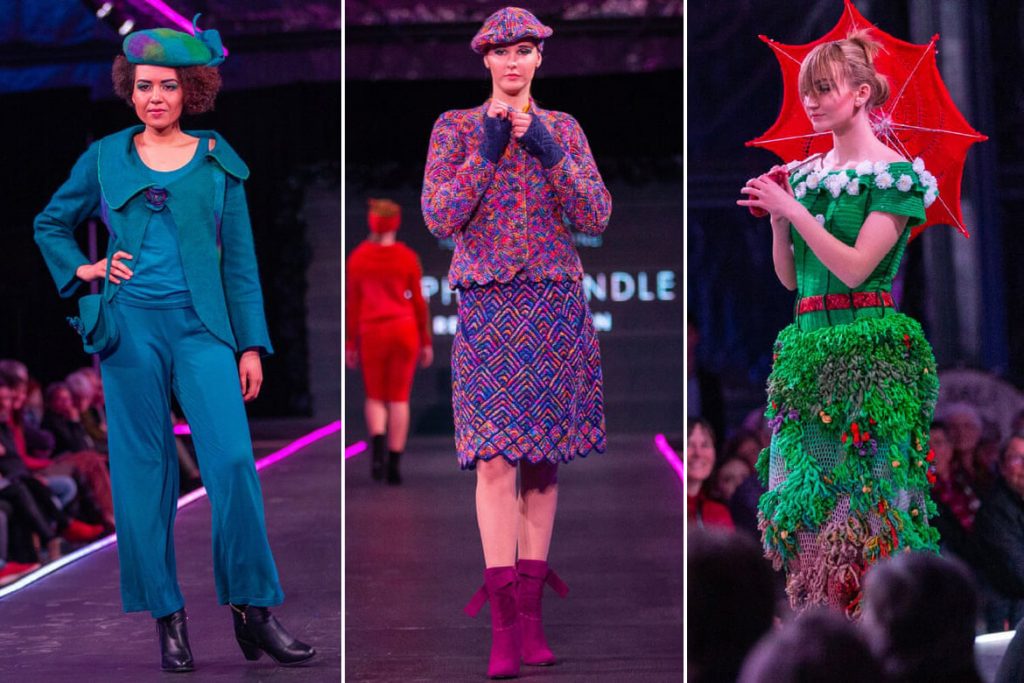It’s Friday night in rural Alexandra and a dozen high school students are dancing down a makeshift catwalk in woollen underwear, as Ria Mae’s Clothes Off blares from the speakers.
Despite New Zealand’s reputation as a sheep-loving nation the country’s wool industry has been in a steady decline since the late 80s, and tonight the locals are stripping off in an effort to revive the country’s national fibre; and make “itchy, scratchy” wool sexy for the first time.
“When I first heard this was all wool I was like ewwww, wool,” says Tayla Fry, a part-time model and local high school student who wore a twinset on the catwalk.
“It’s not a trend at the moment. It’s not everyone’s thing … you don’t wear wool unless you have to. But then I realised it is actually comfortable and warm. Now I am into it, I mean I might even consider wearing it to the school ball.
The catwalk has been constructed in a packing shed with worn Persian carpets taped to the floor to keep the models’ toes warm. Daphne Randle, 79, is sitting in the front row on a winter’s night that drops to minus 3C, watching her woollen creations on the catwalk. Randle is an award-winning knitter, and wool royalty in the deep south of New Zealand.
When Randle quit smoking more than two decades ago, she took up knitting to keep her hands busy; and she took it up big time, and is now the most famous knitter for miles around.
But for Randle, knitting isn’t a hobby, it’s a vocation. Like many other rural New Zealand women, she is determined to resuscitate the beleaguered wool industry, one stitch at a time.
“When something is made with love it carries a sort of karma,” says Randle who grew up on a 400-hectare (1,000-acre) sheep station in South Otago and started knitting at the age of four.
“People are starting to want something that is special. New Zealand has always called itself a wool country. And I think women on farms have always made their own clothes and knitted. Now they’re just turning it into businesses.”
Randle is one of the 55 designers – amateur and professional – who have crafted knitted creations from scratch for the WoolOn fashion show; efforts that are beginning to snag the interest of big-time designers.
The show aims to raise the profile of wool in New Zealand and the world, and has become especially popular with farmer’s wives. Traditional skills that have long kept the homes fires burning are being used in new ways.
On opening night last Friday, high school students and local models strut down the catwalk in garments made from 75% wool (a rule for entrants). There are clinging merino evening dresses and slinky mini skirts, woollen shoes and twinsets in bright colours.
“Wool doesn’t have a sexy reputation at the moment,” says Leonie Williamson, WoolOn’s co-chair.
“If you can make it more fashionable, more glamorous, it will lose some of that stigma of being Grandma’s woolly jumper, lumpy and bumpy and all of that.”.
Simon Swale, a senior lecturer at Otago Polytechnic’s school of design and one of the three judges at the event, is wrapped up in a leather and sheep shearling jacket. He says wool is on the brink of a resurgence in New Zealand and around the globe, as people look for quality, natural fibres and begin rejecting fast, disposable fashion.
“Wool is one of the bedrocks of New Zealand culture, of the New Zealand economy, we owe a lot of our history to what wool has done for us,” says Swale. “It is part of our identity.”
But the wool industry in New Zealand is in crisis. In July, agriculture minister Damien O’Connor hosted a summit in the capital Wellington to discuss record low returns and poor morale in the industry as the popularity and value of strong wool (from crossbred sheep) continues to spiral down.
There are six sheep for every person in New Zealand, but this statistic belies a massive decline, from a peak of 22 sheep per person in 1982.
The reasons for wool’s decline are complex, but the rise of the more lucrative dairy industry, land tenure in the high country (the traditional home of merino sheep) and farmers focusing on meat production have all contributed to the downturn.
Despite record high prices for wool across the Tasman, New Zealand lags behind Australia when it comes to earnings because it produces mostly strong wool, usually used for carpets, bedding and upholstery, while current demand from China and Europe is for fine wool, which accounts for less than 15% of New Zealand’s wool produce.
However WoolOn competitors and Federated Farmers insist strong wool is suitable for clothing and fashion too, especially when processed using modern techniques.
O’Connor says the best chance for the industry is to promote wool as a warm, breathable and natural at a time when the rage for plastics and synthetic fibres is waning. The government is exploring how to connect the sector with European and Chinese fashion houses, something Australian rivals did years ago.
“When our primary sectors do well, all of New Zealand does well,” he says. “Wool is important because in the spirit of Kaitiakitanga [guardianship], we need to not just preserve, but wisely utilise our natural resources.”

